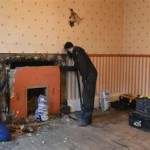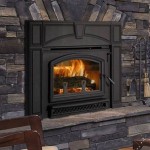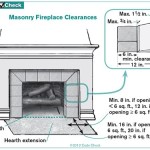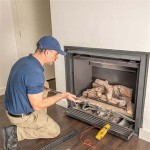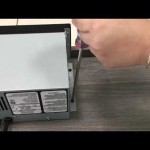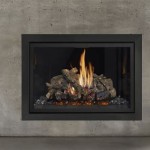Outdoor Stainless Steel Fireplace Inserts: Durability, Aesthetics, and Functionality
Outdoor spaces are increasingly becoming extensions of the home, offering opportunities for relaxation, entertainment, and connection with nature. A key element in creating a comfortable and inviting outdoor environment is a fireplace. While traditional masonry fireplaces have their charm, outdoor stainless steel fireplace inserts offer a modern, durable, and versatile alternative. Their resistance to the elements, ease of installation, and aesthetic appeal make them a popular choice for homeowners looking to enhance their outdoor living areas.
Stainless steel fireplace inserts are designed to be housed within an existing masonry fireplace or a custom-built enclosure crafted from materials like stone, brick, or concrete. They provide a controlled and efficient burning environment, maximizing heat output and minimizing smoke. Unlike open-air fire pits, these inserts offer a more contained and directed source of warmth, often incorporating features like adjustable dampers and spark screens for enhanced safety and performance.
The selection of an appropriate outdoor stainless steel fireplace insert involves careful consideration of various factors, including size, heat output, fuel type (wood, gas, or propane), and aesthetic design. Understanding the benefits and limitations of each option is crucial for making an informed decision that aligns with individual needs and preferences. Furthermore, adherence to local building codes and regulations is essential for ensuring safe and compliant installation.
Key Point 1: Durability and Weather Resistance
The primary advantage of stainless steel in outdoor applications is its exceptional resistance to corrosion and weathering. Outdoor environments expose materials to a constant barrage of elements, including rain, snow, sunlight, and temperature fluctuations. These conditions can quickly degrade less durable materials, leading to rust, cracking, and eventual failure. Stainless steel, particularly grades 304 and 316, are formulated to withstand these harsh conditions for extended periods, ensuring the longevity of the fireplace insert.
Grade 304 stainless steel is a common choice for outdoor fireplace inserts due to its good corrosion resistance and relatively lower cost compared to other grades. It contains chromium and nickel, which form a passive layer on the surface of the steel, protecting it from oxidation and rust. This grade is suitable for most outdoor environments, but it may be susceptible to pitting corrosion in areas with high salt concentrations, such as coastal regions.
Grade 316 stainless steel offers superior corrosion resistance compared to grade 304. It contains molybdenum, an element that enhances its resistance to chloride attack. This makes it an ideal choice for outdoor fireplace inserts in coastal areas or environments where exposure to salt spray is prevalent. While more expensive than grade 304, the increased durability of grade 316 can justify the investment in the long run, especially in challenging environments.
Beyond the grade of stainless steel, the thickness of the material also plays a crucial role in its durability. Thicker gauge stainless steel offers greater resistance to deformation and impact, extending the lifespan of the fireplace insert. It is important to select an insert with an appropriate gauge of stainless steel based on the expected use and environmental conditions.
The welding techniques used in the construction of the insert also impact its durability. High-quality welds ensure that the seams are strong and resistant to corrosion. Poorly executed welds can create points of weakness where moisture and contaminants can penetrate, leading to premature failure. Reputable manufacturers employ skilled welders and rigorous quality control processes to ensure the integrity of their products.
Key Point 2: Efficient Heat Output and Fuel Options
Outdoor stainless steel fireplace inserts offer a controlled and efficient burning environment, maximizing heat output while minimizing smoke. Compared to open-air fire pits, these inserts direct the heat forward, providing a more concentrated and comfortable source of warmth. This allows users to enjoy their outdoor spaces even during cooler evenings or months.
The efficiency of a fireplace insert is determined by several factors, including the design of the firebox, the presence of baffles, and the type of fuel used. Firebox design influences airflow and combustion, while baffles help to retain heat and ensure complete burning of the fuel. The choice of fuel, whether wood, gas, or propane, also affects heat output and efficiency.
Wood-burning fireplace inserts offer a traditional and rustic ambiance, producing a natural flame and crackling sound. However, they require a readily available source of firewood and regular maintenance to remove ashes. Wood-burning inserts also produce smoke, which can be a concern for some users. Furthermore, the heat output of a wood-burning insert can vary depending on the type and quality of the wood used.
Gas-burning fireplace inserts offer convenience and ease of use. They can be connected to a natural gas line or propane tank, providing a consistent and reliable source of fuel. Gas-burning inserts ignite quickly and easily, and the flame height can be adjusted to control the heat output. They also produce less smoke and require less maintenance compared to wood-burning inserts. However, gas-burning inserts lack the natural ambiance of a wood-burning fire.
Propane-burning fireplace inserts offer similar benefits to gas-burning inserts, but they operate on propane instead of natural gas. Propane tanks are portable, allowing for greater flexibility in placement. However, propane tanks need to be refilled periodically, and they require proper storage to ensure safety. The heat output and efficiency of propane-burning inserts are comparable to those of natural gas inserts.
The choice of fuel depends on individual preferences, availability, and budget. Wood-burning inserts offer a traditional experience, while gas and propane inserts provide convenience and ease of use. Careful consideration of these factors is essential for selecting the most suitable fuel option.
Key Point 3: Aesthetic Versatility and Design Integration
Outdoor stainless steel fireplace inserts offer a modern and aesthetically versatile design option that can complement a variety of outdoor living styles. The clean lines and sleek finish of stainless steel provide a contemporary look that integrates seamlessly with modern architecture and landscaping. However, these inserts can also be incorporated into more traditional designs by surrounding them with natural stone or brick.
The versatility of stainless steel allows for a wide range of design possibilities. The insert can be customized with various decorative elements, such as fire glass, logs, or stones, to create a unique and personalized look. The surrounding enclosure can be constructed from a variety of materials, including stone, brick, concrete, or wood, further enhancing the aesthetic appeal.
The size and shape of the fireplace insert can also be customized to fit the specific dimensions of the outdoor space. Rectangular inserts are a common choice for their clean lines and efficient heat distribution, while square or round inserts offer a more unique and visually appealing design. The height and depth of the insert can also be adjusted to create the desired scale and proportion.
The integration of the fireplace insert into the overall outdoor design is crucial for creating a cohesive and harmonious space. The placement of the fireplace should be carefully considered to maximize its functionality and aesthetic impact. It should be positioned in a location that is easily accessible and provides a comfortable gathering space for family and friends.
The surrounding landscape and hardscape should also be designed to complement the fireplace. Planting trees and shrubs around the fireplace can create a natural and inviting ambiance, while adding comfortable seating and lighting can enhance the overall functionality of the space. Careful attention to these details ensures that the fireplace becomes an integral part of the outdoor living area.
Manufacturers offer a wide range of styles and finishes of stainless steel inserts. Brushed stainless steel offers a modern, non-reflective surface. Polished stainless steel provides a shiny, reflective look. Many inserts are also available with powder-coated finishes in a variety of colors to match the outdoor décor. The selection of the appropriate finish depends on the desired aesthetic and the level of maintenance required.

Outdoor Fireplace Stainless Steel Complete Vent Free 36 By Superior Vre4300 Series Vre4336

Stainless Steel Outdoor Vented Wood Burning Fireplace Insert At Com

Outdoor 42 Stainless Steel Wood Burning Fireplace Wre3000 Wre3042 F0453 F0454

Superior 42 Stainless Steel Outdoor Propane Gas Fireplace Vre4342 The

Majestic Courtyard 42 Traditional Outdoor Gas Fireplace Odcoug North Country Fire

Superior 42 Inch Stainless Steel Outdoor Gas Fireplace Fine S

Superior 36 Inch Outdoor Wood Burning Fireplace Wre3036

Napoleon Riverside Clean Face 47 Outdoor Built In Natural Gas Fireplace W Millivolt Ignition And Brushed Stainless Steel Gss42cfn

Courtyard 42 Outdoor Traditional Fireplace With Intellifire Ignition Single Sided Stainless Steel Interior Fireside Home Solutions

Superior 42 Traditional Vent Free Outdoor Firebox Vre4242 Us Fireplace

